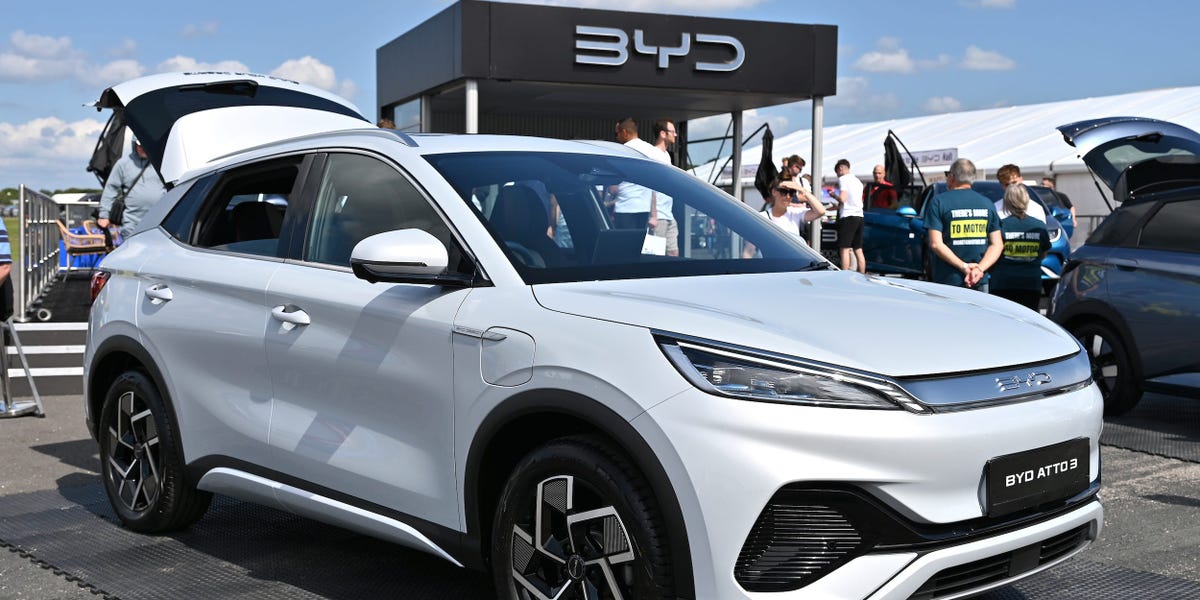- cross-posted to:
- technology@lemmy.world
- cross-posted to:
- technology@lemmy.world
Even ICE cars have power inverters that will run off the car battery.
Why a puff piece about a particular type of car, and about a particular brand besides?
Because vehicle to load (V2L) is a popular selling point of EVs. While the article isn’t clear, it sounds like this is what they already had installed and used.
V2L is not the same as those inverters. The inverters can only provide enough power for a few outlets (~3,000 Watts or so, depending) and for a relatively brief time (looks like most are 600-1500 Wh, meaning 1 hour of a single US 120v outlet at capacity). They must be purchased separately (which can be a problem once the need first arises, since they are not a common preventative option), and then manually connected all the way from car to device.
V2L, however, is very different. It is purchased and configured when the vehicle charging circuit is installed. It connects directly to the mains line, meaning that the feature simply needs to be turned on. Devices you want to power are still plugged into the wall. This feature can often supply 50 amps @ 240v, or 12,000 Watts.
Then there’s the issue of capacity. The battery used to start an ICE isn’t even playing the same sport as an EV battery. The high end noted above is 1,500 Wh (1.5 kWh). The Tesla model 3 has one that’s 50,000 Wh (50 kWh), while the F150 lightning has 98,000 Wh (98 kWh) and an option for 131,000 Wh (131 kWh). While an ICE can act as a generator, I’m not even going to try to get an estimate on capacity. Way too many variables involved.
As for why the article focused on that brand/model, I think it’s more about tugging at the heart strings. It’s less about the brand and more about putting a face on why the feature was helpful/important. But I agree that it was written in a way that focused way too heavily on the brand and feels like an ad.
This company I’ve never heard of is appearing everywhere in social media. Obviously they’re spending big to get attention with advertorials and then social media links to said content.
BYD employ about 570,000 people and by some measures are the largest carmaker in the world. I’d never heard of them either until a couple years ago. They’ve definitely got the cash to put into PR like this. Past couple years Australia started importing their electric cars. https://en.wikipedia.org/wiki/BYD_Company
Wow. There ya go. Talk about little old me living in my bubble
This is the best summary I could come up with:
An Australian woman used her BYD electric car to run her son’s dialysis machine after a huge storm left her without power.
After flash flooding knocked out electricity across southeast Queensland on Christmas Day, Kristy Holmes used her Atto 3, which is made by Chinese EV giant and Tesla rival BYD, to power her 11-year-old son’s dialysis machine, according to a Guardian report.
Holmes told The Guardian that her son Levi, who is waiting to receive a kidney transplant, could have faced life-threatening consequences were it not for the Atto 3’s “vehicle to load” feature, which allows it to charge household appliances with excess power from the car’s battery.
The fact that some EVs are capable of acting as power generators on wheels makes them especially useful during major blackouts caused by extreme weather and natural disasters.
When Hurricane Ian hammered the Florida coast in 2022, Ford saw a 127% increase in the number of people using their F-150 lightning electric pickups as power sources.
Ford CEO Jim Farley posted on X that hurricane-hit drivers were using their trucks to cook meals and power lights.
The original article contains 371 words, the summary contains 185 words. Saved 50%. I’m a bot and I’m open source!
I’m suprised the family didn’t have UPS & generator at their house when a member’s life depends on a running machine. It’s not like many people built batteries in their homes just to store their solar energy. I highly doubt that a BYD is cheaper than a generator.




